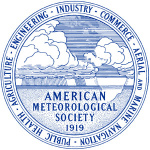- Industry: Weather
- Number of terms: 60695
- Number of blossaries: 0
- Company Profile:
The American Meteorological Society promotes the development and dissemination of information and education on the atmospheric and related oceanic and hydrologic sciences and the advancement of their professional applications. Founded in 1919, AMS has a membership of more than 14,000 professionals, ...
Process in which carbon in the atmosphere is absorbed by a biological system and assimilated into it.
Industry:Weather
Pollutants that can injure health, harm the environment, and cause property damage. In 1997, the criteria pollutants in the United States were.
Industry:Weather
Popularly, descriptive of short, rough, irregular wave motion on a sea surface.
Industry:Weather
Precipitation particles forming in the active updraft of a cumulonimbus cloud, growing primarily by the collection of cloud droplets (i.e., by coalescence and/or riming) and falling out not far from their originating updraft.
Industry:Weather
Pieces of floating ice that are subjected to a converging motion, which increases ice concentration and/or produces stresses that may result in ice deformation.
Industry:Weather
Particles with a diameter greater than 2 μm suspended in the atmosphere.
Industry:Weather
Phenomenon resulting from capillary forces that induce a liquid to enter a porous medium.
Industry:Weather
Physiological damage to plant parts and tissues in the temperature range from about 20° to 0°C. Compare frost damage.
Industry:Weather
Organic compounds containing a carbon–oxygen double bond; composed of aldehydes, ketones, and organic (carboxylic) acids, plus their derivatives. These species can be emitted directly to the atmosphere from natural or anthropogenic sources, or can be formed as intermediates in the oxidation of hydrocarbons. They are an important source of carbon monoxide and radicals.
Industry:Weather
Opposite to the gradient. For example, if temperature decreases upward, then the temperature gradient is positive, which would make counter-gradient negative or downward for this example.
Industry:Weather
